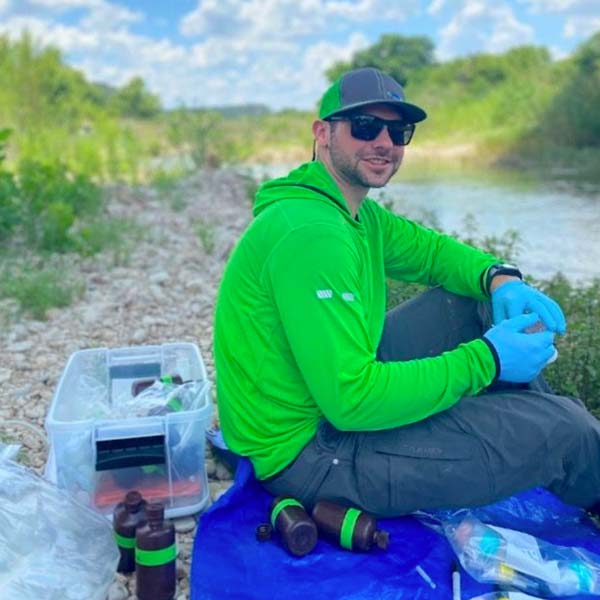Ethan Sweet
News

Ethan Sweet
All life on Earth depends on the Critical Zone, which includes plants and trees, soil, and the subsurface, including groundwater. Research in the Critical Zone examines how disturbances and climate change affect ecosystem services and energy, food, and the water cycle. Rivers and streams are vital for nutrient and water transport within the Critical Zone. Ethan Sweet, a Masters student working with Jones Professor of Aqueous Geochemistry Annette Engel, is focusing his research where surface water and groundwater meet, an area called the hyporheic zone. As much as 90%–98% of biogeochemical processing within a watershed is controlled by the hyporheic zone, which means the hyporheic zone has the potential to buffer against the effects of climate change that impact surface water temperatures, dissolved oxygen and nutrient concentrations, contaminant transport, and altered flow conditions due to drought. Their project is funded by the US Army Corps of Engineers’ Aquatic Nuisance Species Research Program’s focus on Next Generation Ecological Modeling. For the past two summers, Sweet participated in fieldwork with colleagues from Texas State University. So far, they have collected hundreds of water samples from nine different river systems across the state of Texas. These include the Colorado River and its tributaries, and tributaries to the Red, Rio Grande, Guadalupe, and Neches rivers. Sweet’s thesis research focuses on evaluating hydrologic, geochemical, and microbial data from a series of pools and riffles located in the San Saba River within the Colorado River watershed. Sweet is uncovering details about microbial metabolism tied to dissolved oxygen, nitrate, sulfate, and methane concentrations, which fluctuate depending on how much groundwater is discharging into the hyporheic zone. In the absence of oxygen, metabolically diverse microbes process carbon and provide essential organic matter for organisms like mussels. The microbial processes will change the type and availability of carbon within the hyporheic zone and river system as water contributions are affected by climate change. Sweet’s results will be used by the US Army Corps of Engineers in ecological models to understand the distribution of river organisms and to improve river restoration projects.